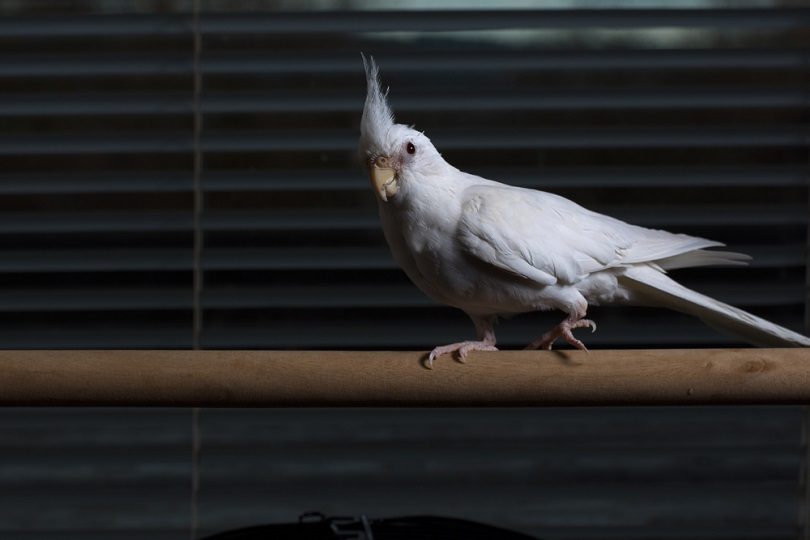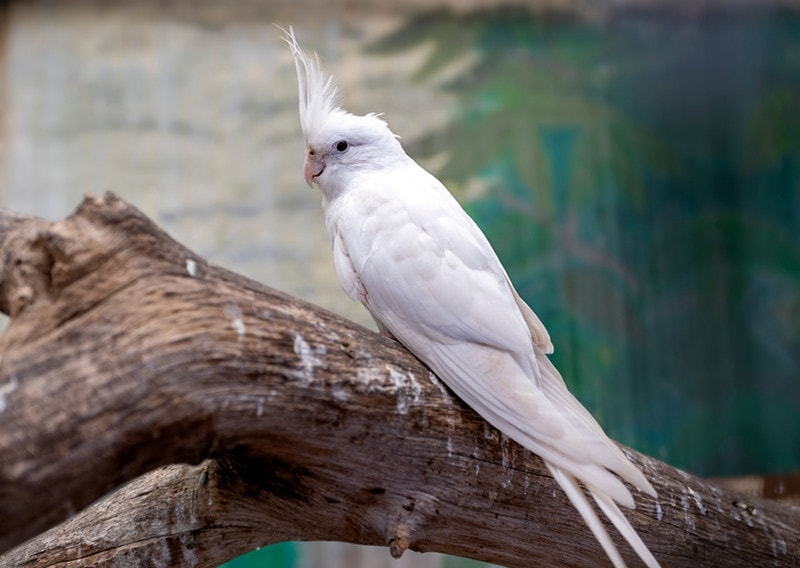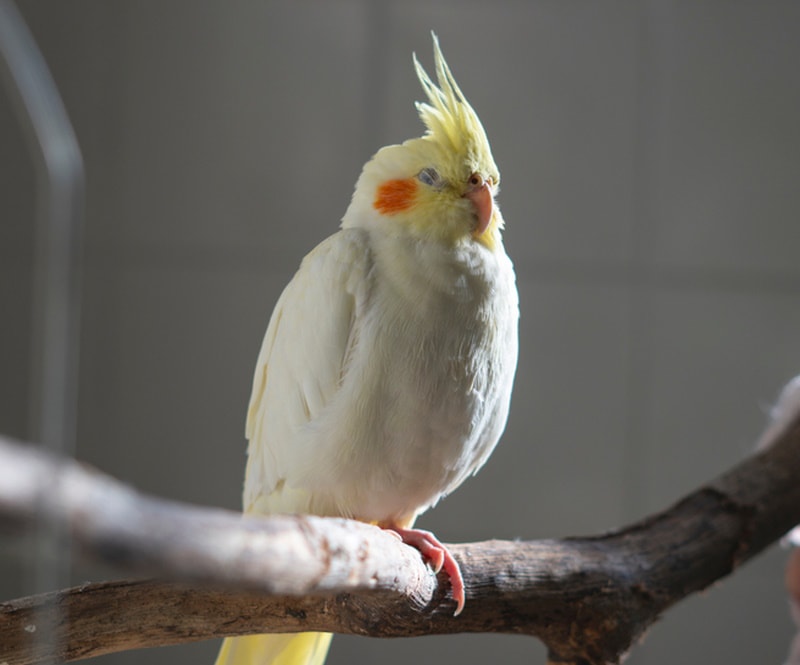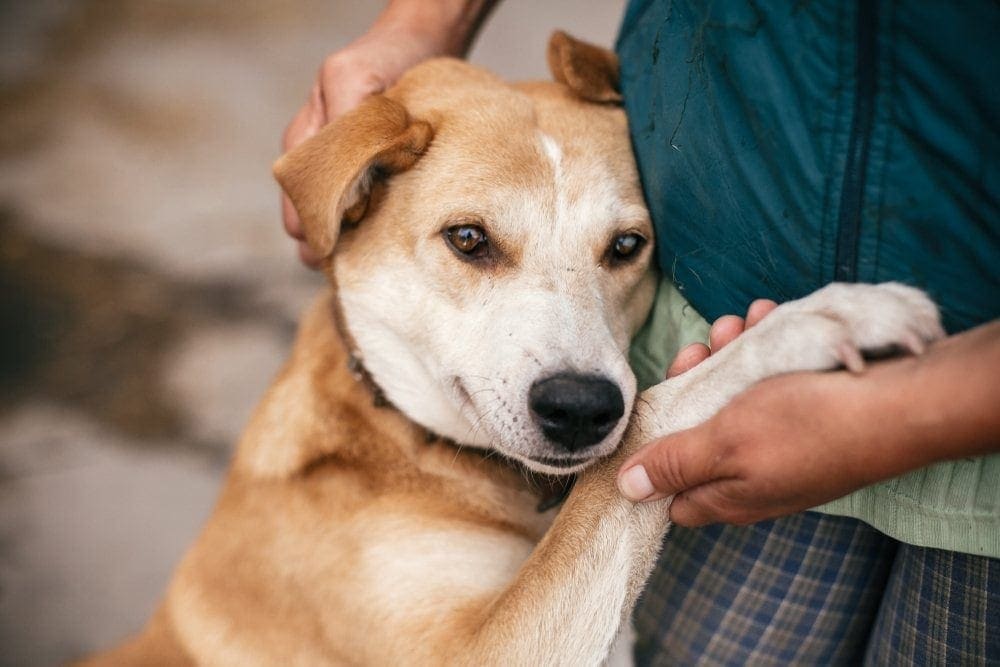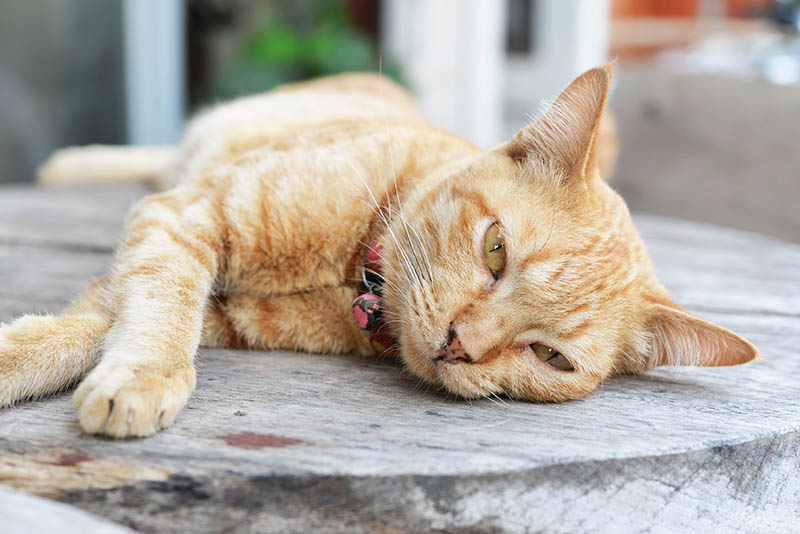Parrotlet vs Cockatiel: The Differences (With Pictures)
Updated on
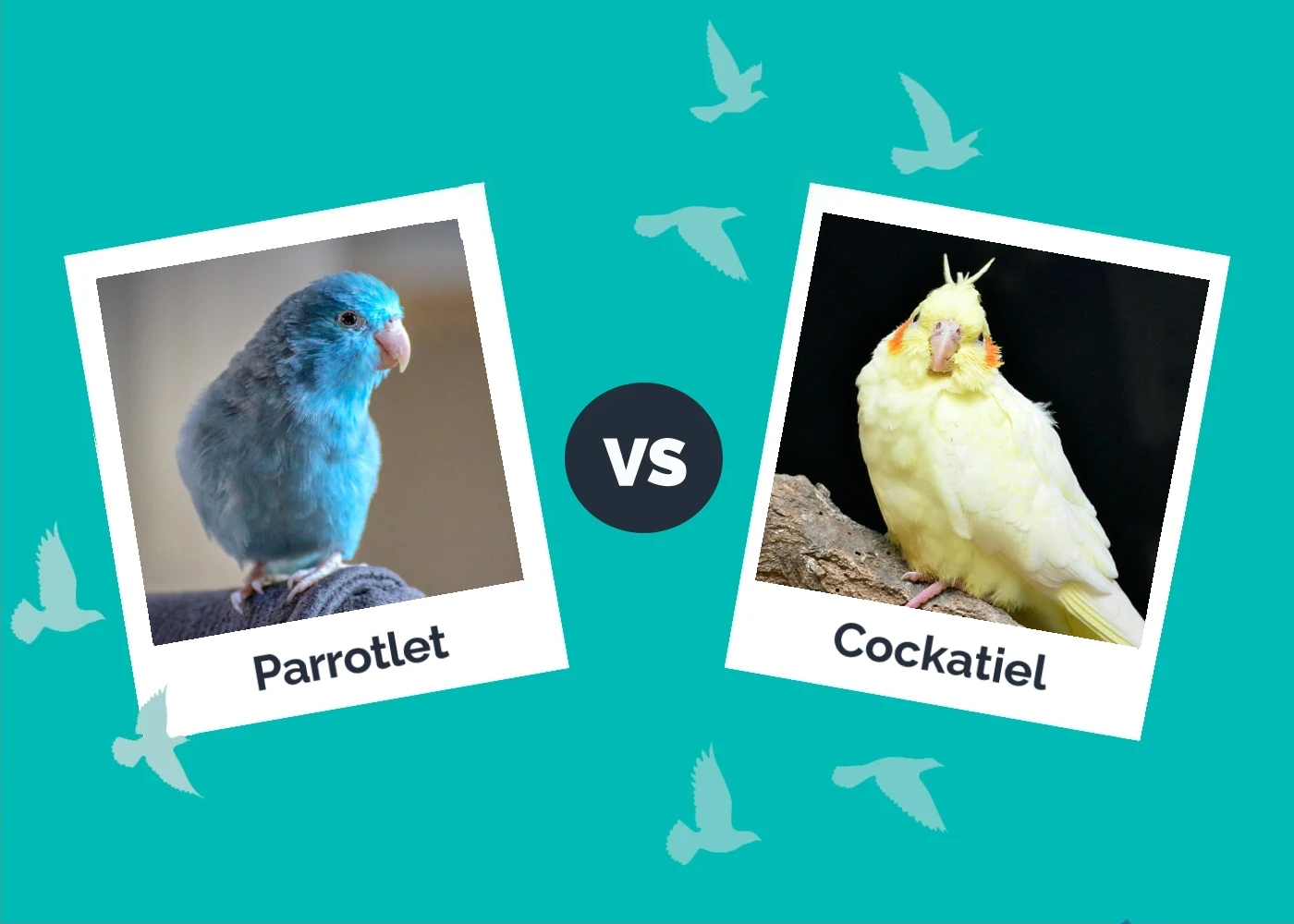
Although the most common pet options are dogs and cats, birds are also gaining extreme popularity in the pet world, with parrots being the most popular pet bird option. Parrots make excellent pets as they’re often friendly, social, and affectionate. You can get various available parrot species as pets, although the two most common are parrotlets and cockatiels.
Both parrotlets and cockatiels are small and can be great human companions; however, as their personalities are entirely different, it’s essential to know how to distinguish these two species and choose the most suitable one as a pet.
In this article, we’ll talk more about parrotlets and cockatiels, discussing their differences and traits to help you choose between them.
Visual Differences
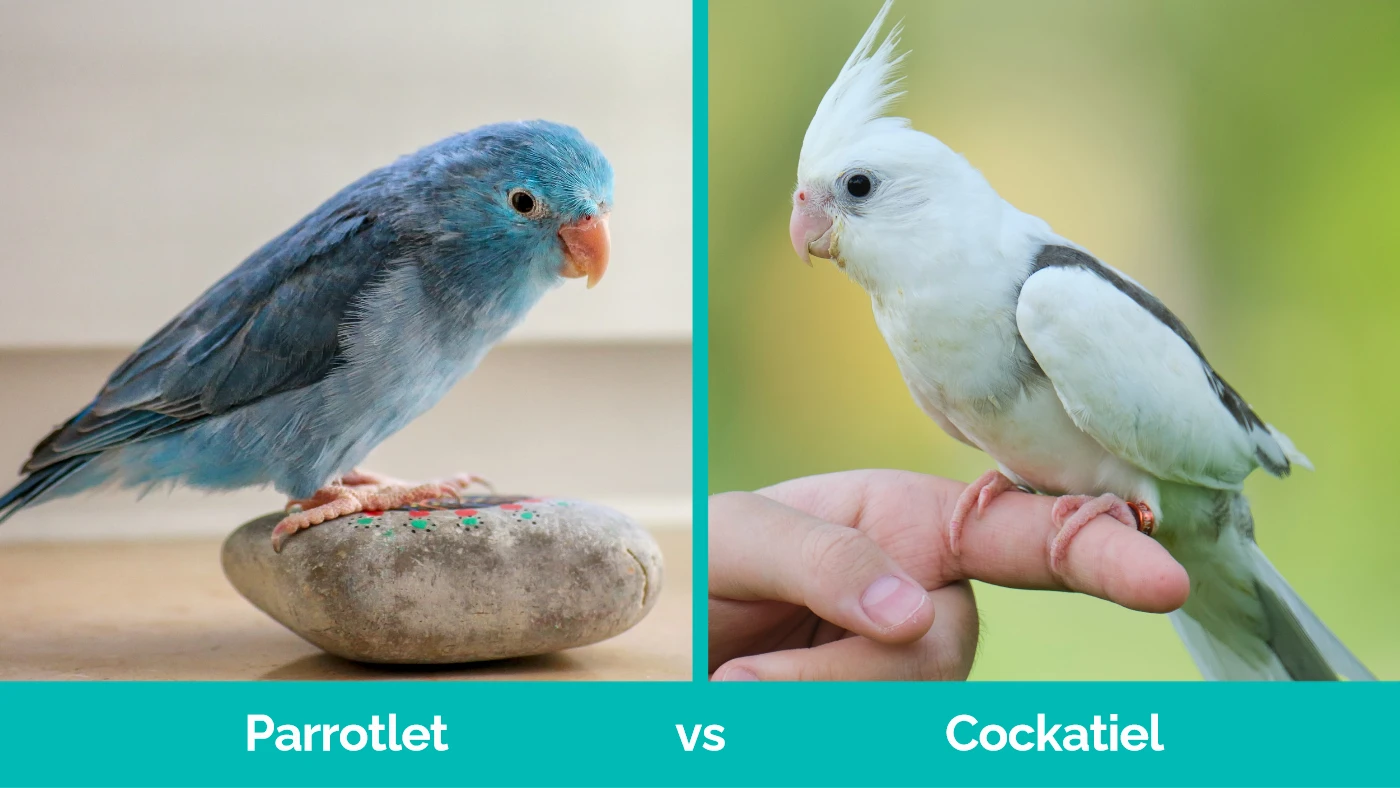
At a Glance
- Average height (adult): 4–5 inches
- Average weight (adult): 33 grams
- Lifespan: 20–30 years
- Color form: Blue, green
- Care difficulty: Intermediate
- Diet: Herbivorous
- Personality: Affectionate, sassy, territorial, highly intelligent
- Minimum habitat size: 18” x 18” cage
- Average height (adult): 11–14 inches
- Average weight (adult): 75–120 grams
- Lifespan: 25 years
- Color form: Gray, yellow, silver, white, blue, green
- Care difficulty: High
- Diet: Herbivorous
- Personality: Social, friendly, love to interact, playful, gentle
- Minimum habitat size: 18” x 18” cage
Parrotlet Overview
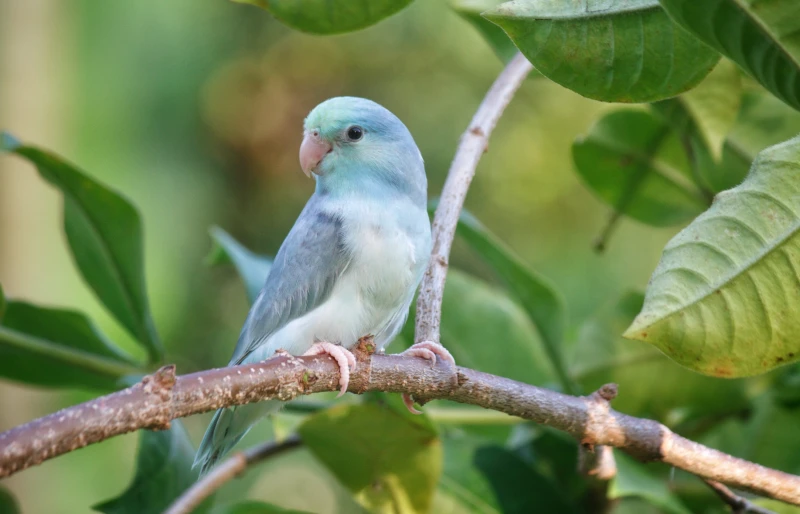
Parrotlets are the smallest known species of parrots; this parrot species is currently one of the most popular pet parrot options for people worldwide.
These stunning birds have unique personalities, making them excellent human companions. However, they can often be sassy and territorial, which is something to keep in mind before adopting a parrotlet.
There are several species of parrotlets you can encounter, although the Pacific parrotlet and the green rump parrotlet are commonly kept as pets.
Origin, History & Appearance
Parrotlets are stunning birds native to the lush forests of Central America, South America, and particularly Mexico. They are the smallest parrot species kept as a pet which is what makes them interesting for many bird lovers.
Parrotlets typically gather in large flocks in the wilderness; their flocks can contain over 100 birds. This parrot species is highly social and loves forming bonds with family members and mates. Parrotlets became an especially popular pet bird choice due to their size and unique appearance; they are typically 4–5 inches long and green or blue in color.
Personality
Parrotlets are spicy little birds who can often be both sassy and affectionate. They are highly intelligent but can often be stubborn and quick, so you don’t want to get on their bad side!
These parrots can develop strong bonds with their human companions, but they need a lot of love and affection to relax and show their gentle side. Although they can be good for larger families, parrotlets tend to show the most affection to one particular person, which is something to keep in mind before getting them as pets.
Parrotlets frequently get territorial when you approach their cage, but they’re generally friendly around humans. Because of that, many parrotlets like to show affection by hiding in their owner’s shirt or pocket and climbing onto their shoulders.
When keeping these birds as pets, it’s best to keep a single bird; having two parrotlets may lead to the birds becoming overly friendly and showing aggression toward you. Although this may not happen with all pet parrotlets, it’s a very common behavior, so it’s best to stick to having one of these sassy creatures.

Speech & Training
Parrotlets are generally quiet, docile birds, meaning they’re not as vocal and chatty as some of the other parrot species you may encounter. Still, just because parrotlets are not overly chatty doesn’t mean they can’t talk.
Through practice, training, and repetition, these birds can develop a small vocabulary and learn a few words. These birds also typically respond to their name and can recognize your voice even in a larger crew.
Besides learning to talk, these stunning, small parrots can also learn other tricks, such as hanging upside down from your finger.
Health & Lifespan
Parrotlets are generally very healthy and have long lifespans, lasting up to 20–30 years. These birds don’t require much veterinary care; it’s best to have your parrotlet checked right after the adoption or purchase.
After the initial vet check-up, having a yearly vet visit should be enough to keep your parrotlet in good shape. The veterinarian will often question you about the bird’s housing, feeding schedule, and discuss behavioral changes and needs with you.
They may also run blood and stool tests to rule out any possible health problems that might occur.
Overall, parrotlets can live healthy and happy lives as long as you take proper care of them. Due to their size, these birds are susceptible to hazards from stepping on them or being attacked by other animals.
That said, you should never leave your parrotlets unsupervised, as there are a ton of potential threats that may jeopardize their lives.
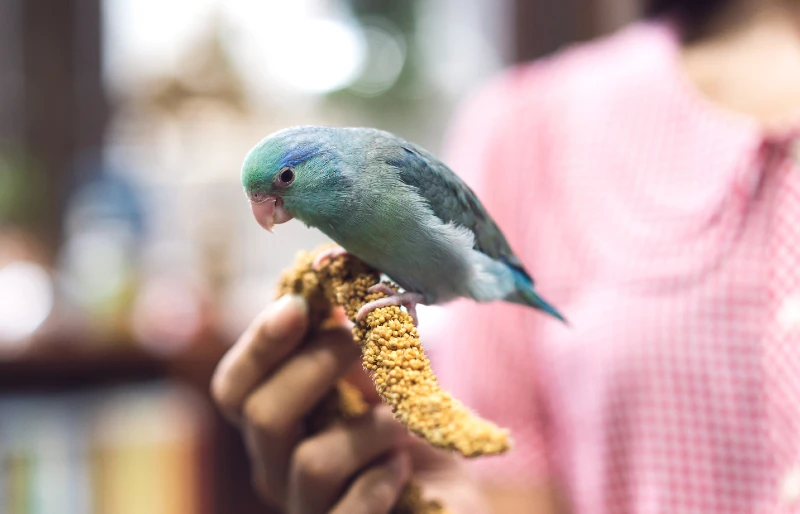
Suitable For:
Parrotlets are friendly and affectionate, so they can be excellent pets for anyone who loves birds and cares for them. As these birds can be very social and playful, they can be a great pet choice for families with older children who can get involved in the regular care of the parrotlet.
They are generally quiet, making them suitable pets for environments where noise may be an issue.
However, you should keep in mind that parrotlets are also somewhat feisty, territorial, and aggressive. Because of their temperament, they may not be the best pet option for people with other pets, babies, and toddlers.
Also, if you already own one parrotlet and are considering getting another one, it might be best to reconsider that decision. When in pairs, these birds can form strong bonds, neglecting their human companions and showing aggression and leading to a lack of interaction
- Friendly
- Affectionate
- Active
- Extremely intelligent
- Easy to train
- Great pets for quiet neighborhoods
- Shouldn’t be in a pair
- Territorial
- May attack other animals (especially bids)
- Could get in trouble when unsupervised
- Not ideal pets for families with babies and toddlers
Cockatiel Overview
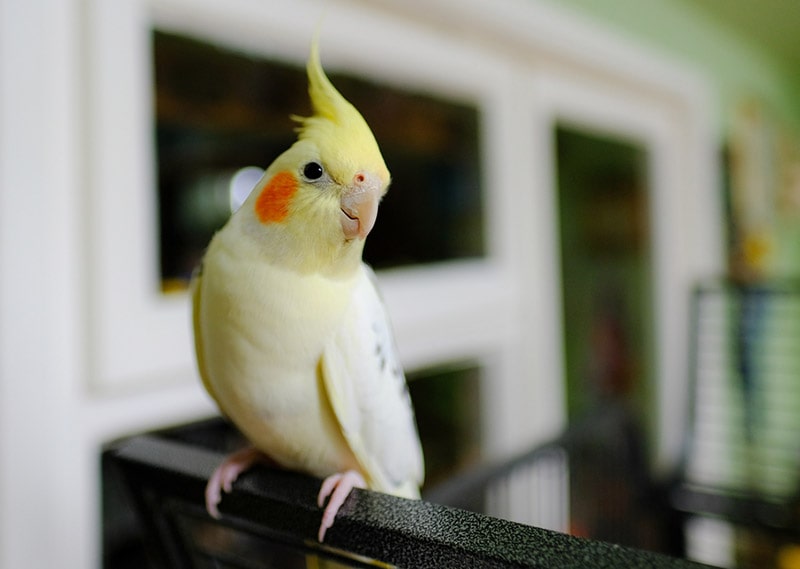
Cockatiels are a unique-looking, colorful parrot species that are also commonly kept as pets. These birds often have lively and friendly personalities making them great companions, but they do require a lot of maintenance and care, which is why they require dedicated owners.
Despite their size, cockatiels are mighty birds who love exploring the exterior world and things that are interesting to them. They are also highly intelligent and come in various color mutations, which is another trait that makes them popular as pet.
Origin, History & Appearance
Cockatiels, also known as quarrions or weiros are a parrot species native to the forests, savannas, and shrublands of Australia. These birds represent the smallest subspecies of the cockatoo, and due to the easy domestication process, these birds are living as pets in homes throughout the world.
You can still find cockatiels in the wilderness in Australia, where they usually gather in large flocks. You can easily recognize them due to their small size, which is typically between 11–14 inches, and their colorful feathers that can come in various colors, including gray, yellow, silver, white, blue, and green.
Personality
Cockatiels are friendly, playful, affectionate, and love to interact with humans. These birds are highly intelligent and often very independent, which is why they love to play with all kinds of toys and engage in fun activities such as looking at themselves in the mirror.
With proper socialization from a young age, these birds will learn how to be around you and will likely develop a strong bond with their human companions. After they get comfortable with you, cockatiels will love to spend time on your shoulders or hanging from your fingers.
Without adequate socialization, these birds may become needy, scared of humans, and become somewhat anxious; that’s why early socialization is essential for any cockatiel living in captivity.
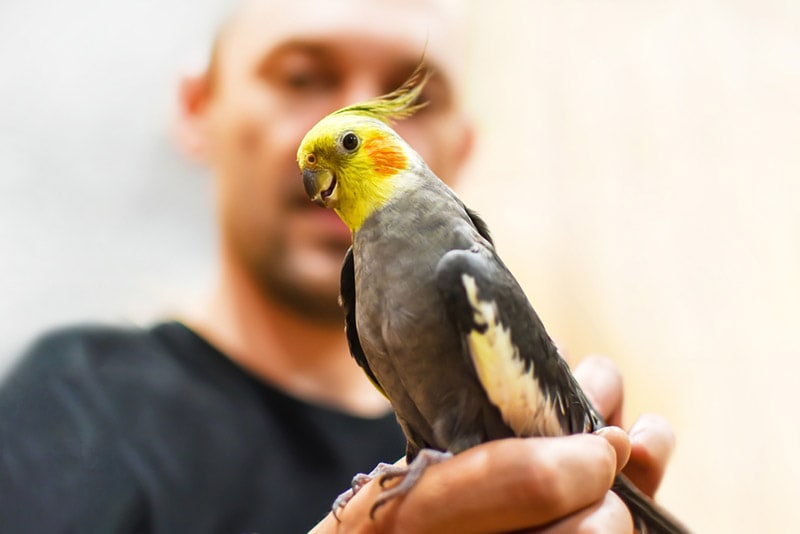
Speech & Training
As cockatiels are extremely smart and eager to please, you can teach them how to whistle and talk, making them entertaining as pets. However, not all cockatiels may be up for this challenge; it’s up to you as a cockatiel owner to teach your bird and help through the learning process.
Most experts believe that any cockatiel can learn how to speak or whistle with enough practice, care, and attention, and, as these birds have long lifespans, you’ll have plenty of time to practice.
If your cockatiel learns how to talk, then communication won’t be an issue, and you’ll be able to easily understand your bird. However, it can often be hard to understand cockatiels who only whistle if you’re unfamiliar with the whistle sounds.
- Hissing sound: This is the sound cockatiels typically make when they feel threatened or scared.
- Scream sound: This is the sound cockatiels typically make when they’re feeling happy, excited, scared, or lonely.
- Unaverage sound: This is the sound cockatiels typically make when they’re trying to imitate humans.
Learning these sounds will allow you to know what your cockatiel is trying to communicate to you and, therefore, ensure your bird has everything it needs.
Health & Lifespan
Cockatiels have extremely long lifespans and can live up to 25 years. Due to the length of their lifespan, these birds require a serious commitment, which is something to keep in mind before keeping them as pets.
Overall, cockatiels are generally healthy but can suffer from reproductive issues, which may lead to egg binding and the eggs developing various medical problems. As they age, these birds may also develop kidney failure, atherosclerosis, and similar diseases.
As there are potential health issues cockatiels may experience, it’s best to have your bird checked by a bird-savvy vet the first time you get it and continue to have annual check-ups to ensure your cockatiel is at its best health.
These birds may often be ill but not even show signs of illness so it’s up to you to ensure your cockatiel gets the necessary medical care.
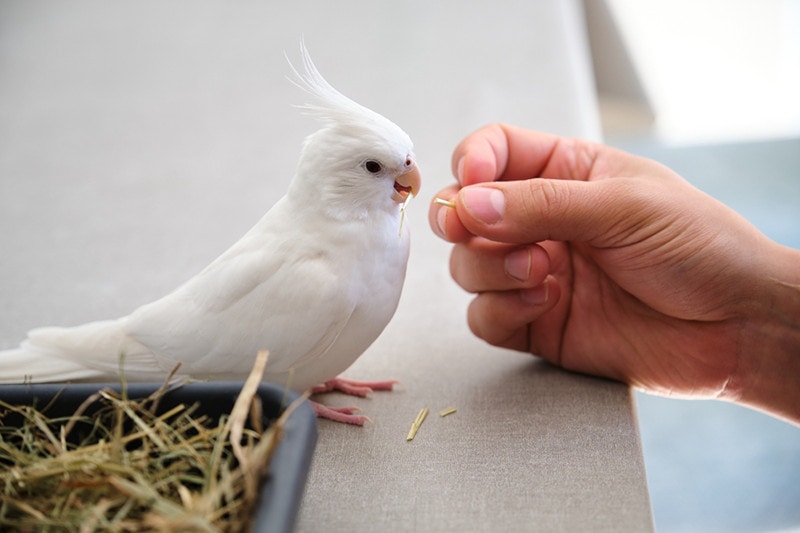
Suitable For:
Due to their interesting appearance and loving personality, cockatiels make excellent pets for anyone interested in owning a bird. They love human affection but live very long, so before getting this bird, you also need to be sure you’re ready for the commitment this species requires.
Cockatiels are usually gentle around kids, but you need to socialize them from a young age to ensure they’re on their best behavior.
As cockatiels don’t like to be left alone, they may be unsuitable pets for people living alone; however, as long as there’s someone in the home to keep them company, these birds should be happy and content.
- Social, friendly, and playful
- Loves to interact with humans
- Great pet choice for families with kids
- May become needy without enough socialization and attention
- They can never be entirely house-trained
- They have high-care needs
Which Breed Is Right for You?
Parrotlets and cockatiels are generally excellent pet parrots, so it all comes down to your preferences. Parrotlets are slightly more territorial and feistier, while cockatiels enjoy playtime and human interaction more.
Both parrot species have long lifespans, and they can be kept in apartments and homes. Due to their nature, cockatiels are better around kids, while parrotlets may be too sassy for families with babies and toddlers.
If considering getting a parrotlet or a cockatiel, carefully consider both breeds before making your choice; cockatiels are great for first-time bird owners but require more care, while parrotlets may need a bit more experience in handling, but they’re less needy and have lower maintenance needs.
See Also:
- Conure vs Cockatiel: The Differences (With Pictures)
- Cockatoo vs. Cockatiel: The Key Differences (With Pictures)
Featured Image Credit: Left – klickblick, Pixabay | Right – Jiří Mikoláš, Pexels


